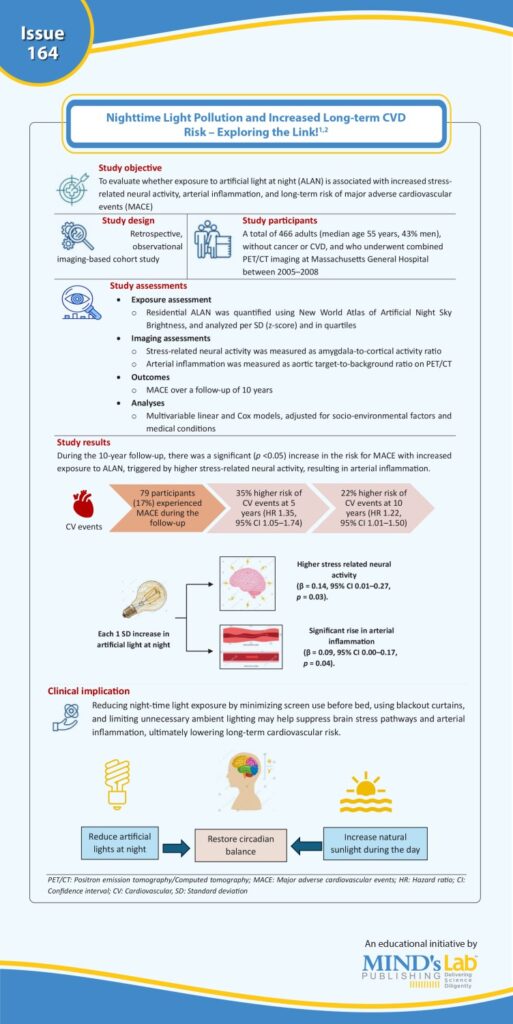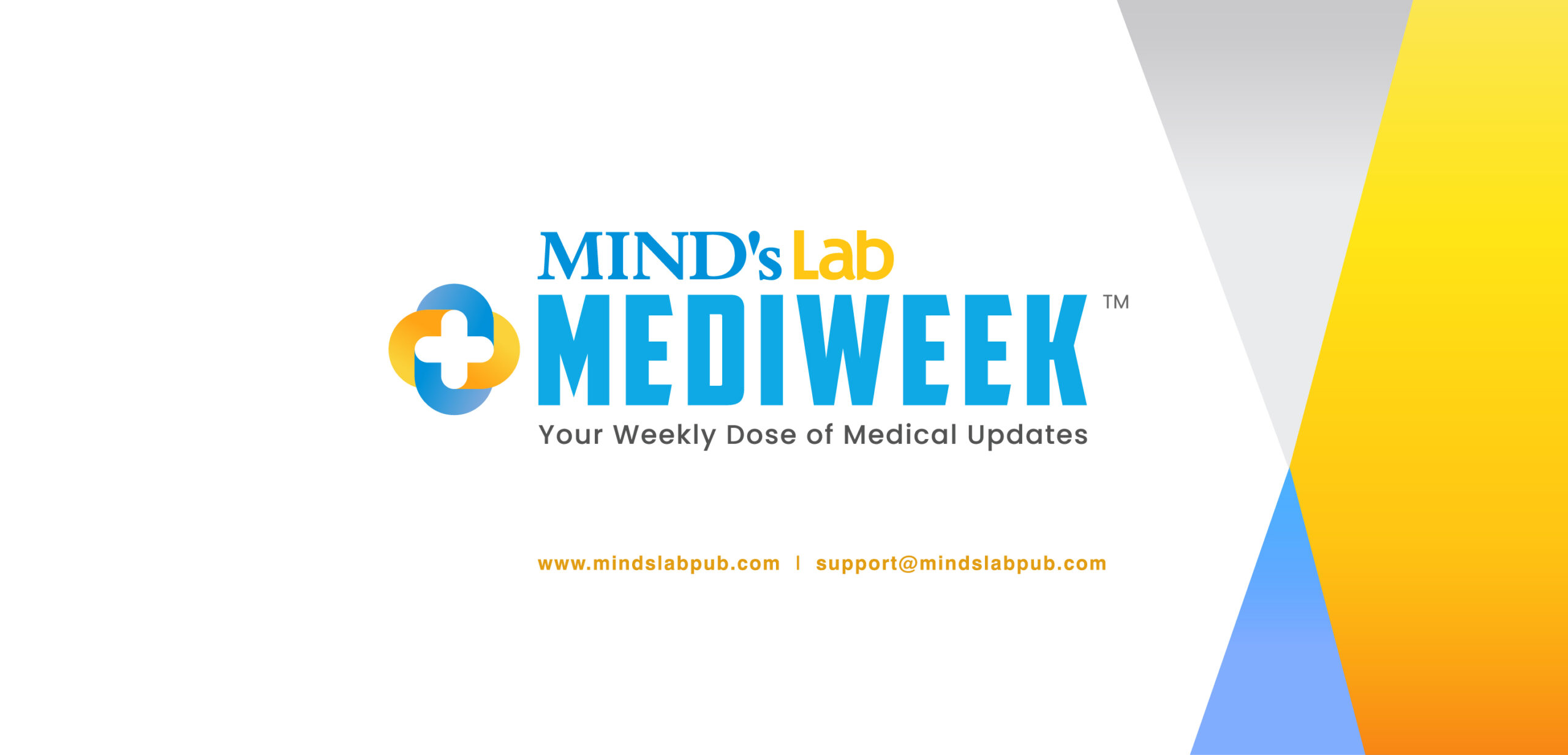
Artificial light at night (ALAN) from digital screens, street lighting, and household sources (called nighttime light pollution) has become an unavoidable environmental exposure in modern urban settings. Clinical evidence shows that ALAN disrupts circadian rhythms, impairs sleep, and causes stress, which are associated with increased risk for cardiovascular disease (CVD) in the long-term.
Though it was well known that nocturnal light can activate stress pathways in the brain and modulate inflammatory responses, causing accelerated arterial inflammation—a key driver of atherosclerosis (which is linked to major adverse cardiovascular events [MACE]), the biological link between real-world residential ALAN exposure and cardiovascular outcomes has not been investigated closely.
A recent retrospective observational study presented at the American Heart Association Scientific Sessions 2025 (November 7–10, 2025, New Orleans) evaluated whether higher residential ALAN exposure is associated with elevated stress-related neural activity, increased arterial inflammation, and higher long-term risk for cardiovascular event. The investigators found that even a one-standard-deviation increase in ALAN exposure was associated with higher neural stress activity, greater arterial inflammation, and significantly increased 5- and 10-year risk of MACE (see Graphic). As ALAN is a modifiable risk factor for CVD, reducing exposure to ALAN may help reduce the stress the stress in the brain pathways, reduce inflammation in the arteries and help in reducing CVD risk.1,2

(Sources: (1.) Saeed F, Aldosoky W, Kim H, et al. Nighttime light pollution associates with adverse cardiovascular events via a mechanism involving heightened stress-related neural activity and atherosclerotic inflammation. Poster presented at the American Heart Association Scientific Sessions 202, November 7–10, 2025, New Orleans, Louisiana, USA. Poster abstract no. MP2275 — 2025. (2.) Hughes S. Artificial light at night may raise CVD risk, Medscape, 2025 [Internet]. Available from: https://www.medscape.com/viewarticle/artificial-light-night-may-raise-cvd-risk-2025a1000uz6
